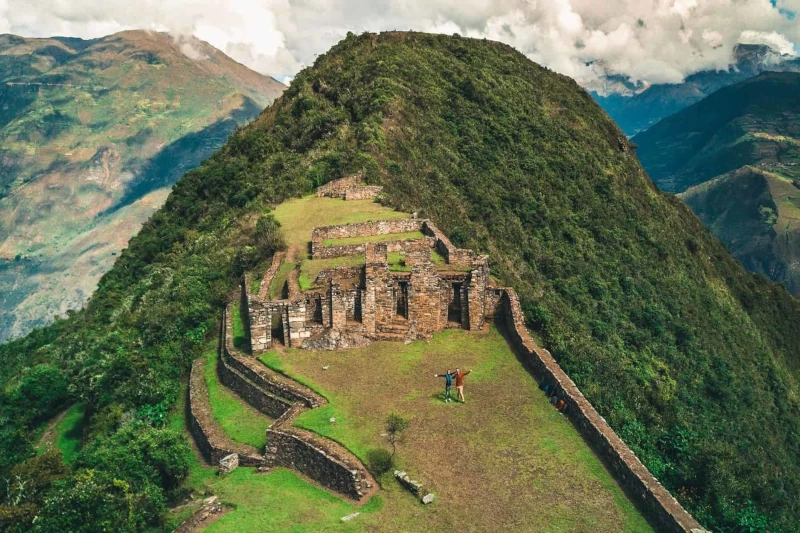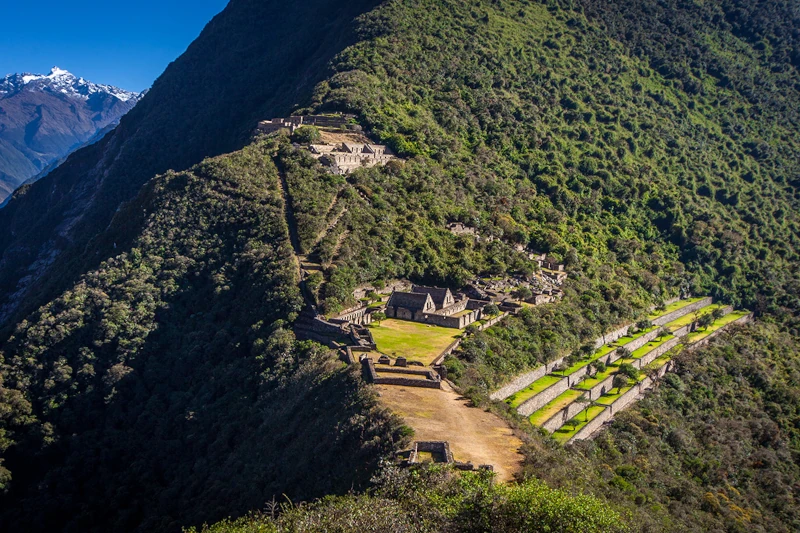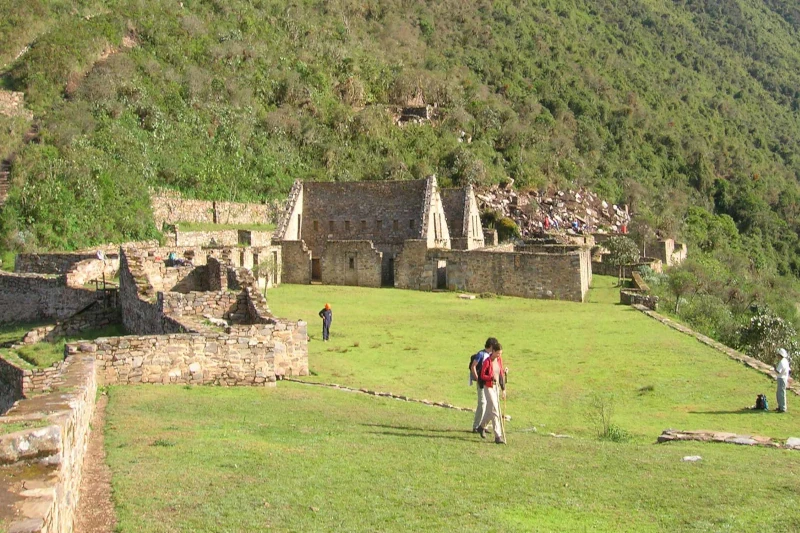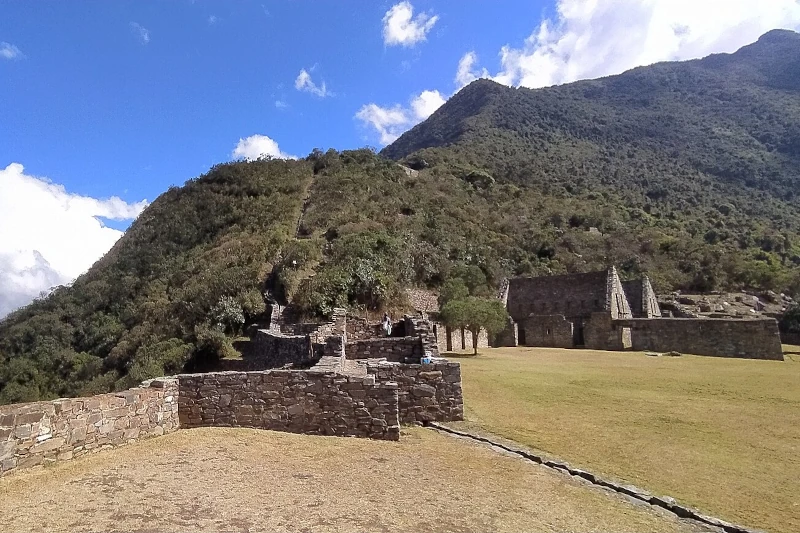Camping at Choquequirao: Best Practices and Tips
May 23, 2024Camping at Choquequirao Trek is a thrilling adventure with no comparison. This lesser-known cousin of Machu Picchu offers breathtaking views and a challenging journey. If you’re planning to camp, preparation is key.
Here, we share essential tips and best practices for camping along the Choquequirao Trek. From selecting gear to choosing campsites, we’ve got you covered. Consequently, ensure your experience is as memorable as the scenery.
Packing light and right is crucial for this trek. Specifically, focus on multi-use items and lightweight equipment. Remember, every ounce counts when you’re climbing.
Weather can be unpredictable in the Andes. Therefore, always prepare for sudden changes. Layering your clothing will help you adapt quickly.
Lastly, respect the environment as you explore it. Stick to established trails and campgrounds. Additionally, leave no trace to preserve the beauty for future adventurers.
Essential Gear Checklist for Choquequirao Camping
Preparing for the Trek
Camping at Choquequirao requires careful planning and the right equipment. Our Choquequirao Trek to Machu Picchu is a demanding high altitude hike. You’ll traverse diverse terrains on the Choquequirao Trail, making robust gear essential.
Begin by selecting a durable backpack. It should handle all your essentials without weighing you down. Comfort and fit are paramount to avoid back strain.
A high-quality sleeping bag is your next crucial item. Night temperatures can plummet, especially at high altitudes. Choose a sleeping bag rated for low temperatures to ensure warmth.
Water and Nutrition Needs
Hydration is key while trekking. Carry a reliable water filtration system. Streams along the trail provide water, but purifying it is a must.
Plan your meals strategically before you begin. Buy food that is nutritious and easy to prepare. High-energy, lightweight options are best for the trail.
Footwear and Clothing Essentials
Invest in high-quality hiking boots. Your footwear should offer support and be well broken-in. Blisters can turn an adventurous trek into a painful ordeal.
Pack moisture-wicking clothing and thermal layers. Layering allows you to adapt to changing weather conditions. Always include a waterproof jacket and pants.
A good hat and UV-protection sunglasses are indispensable. They protect against the sun and reduce glare. At high altitudes, UV rays are particularly intense.
Health and Safety Gear
First aid kits are essential for any outdoor activity. Include items for blisters, cuts, and other minor injuries. Also, carry altitude sickness medication as a precaution.
A headlamp or flashlight is necessary. The Choquequirao Trail can be treacherous in low light. Ensure your path is always well lit.
Don’t forget sunscreen and lip balm with SPF. Sun protection is crucial to prevent burns. Reapply every two hours, or more often if sweating.

Navigating the Route
A reliable GPS or a detailed map of the Choquequirao Trail is crucial. Orientation can be challenging in remote areas. Always have a backup power source for electronic devices.
However you can trust our guides in charge of your Choquequirao Trek. The experience will show you the safety and trust you need.
Consider a walking stick or trekking poles. They provide stability and support on uneven terrain. Poles also reduce the impact on your knees during descents.
Check the entrance fee and permit requirements in advance. All trekkers need to pay to access the Choquequirao campsite. Keep all necessary documents accessible.
If you take the Choquequirao Trail with Inca Path, we will take care of all the logistics. The long days of trekking will require the most relaxation and enjoyable trip.
Sustainable Trekking Practices for Camping at Choquequirao
Respect the natural environment of the Choquequirao Trekking route. Always follow the ‘leave no trace’ principles. Minimize your impact and carry out all trash.
Use biodegradable soap and avoid polluting water sources. Personal hygiene is important, but it shouldn’t harm the environment. Plan accordingly to maintain cleanliness.
Engage with local communities respectfully. Purchase supplies or services from them if possible. This supports the local economy and enriches your travel experience.
Choosing the Right Gear Rental
If you prefer not to buy, gear rental is a viable option. Many stores offer high-quality gear. Ensure it’s in good condition before setting out. Inca Path also offers some gear to rent.
Test all rented gear before starting the trek. Familiarize yourself with its functionality. Adjust backpacks and sleeping bags to fit comfortably.
Remember, renting can save money and reduce travel baggage. However, always check for reliability and reviews of rental services. This ensures a hassle-free camping experience during the camping at Choquequirao.
Camping at Choquequirao is an unforgettable adventure that demands thorough preparation. The right gear enhances your experience and ensures safety. Follow this checklist to prepare adequately for the challenges of the Choquequirao Trek to Machu Picchu.
Whether you buy or rent your gear, quality should never be compromised. Prepare for the trek with diligence and respect for nature. Your adventure to Choquequirao will be a remarkable journey through one of Peru’s hidden gems.
Navigating Weather and Terrain: Tips for Safety and Comfort
Camping at Choquequirao trek presents unique climate challenges. Understanding these conditions is crucial for any camper or hiker. Temperatures can vary dramatically, from warm days to freezing nights.
Rain is common in the area, especially during the wet season. Waterproof gear is essential to stay dry and comfortable. Always pack a lightweight, durable raincoat.
Prepare for intense sun exposure during the day. High altitude increases the risk of sunburn. Apply sunscreen regularly, and wear a hat and sunglasses.

Choosing the Right Time to Visit
Camping at Choquequirao is ideal in the dry season, from May to October. During this period, it offers clearer skies and safer hiking conditions. Consequently, trails are less slippery, and river crossings are safer.
However, the dry season also brings colder nights. Therefore, pack thermal layers to combat the cold. Additionally, sleeping bags rated for low temperatures are highly recommended.
Visiting during the shoulder months might offer solitude. Nonetheless, prepare for unpredictable weather. Thus, check forecasts frequently and plan accordingly.
Adapting to the Terrain
The terrain on the Choquequirao trek is rugged and varied, including steep inclines and declines. Consequently, proper hiking boots with good grip and ankle support are essential.
The hike from Choquequirao to Machu Picchu involves long distances daily. Therefore, train for endurance and strength before your trip. This preparation will make your experience more enjoyable and safer.
Portions of the trail, like the descent to Playa Rosalina, are particularly steep. Hence, trekking poles can reduce strain on your knees. They also provide stability on uneven surfaces.
Essential Gear and Strategies
Navigating the terrain requires reliable gear. Therefore, a guided tour is highly recommended for first-timers. Guides know the safest routes and provide valuable insights about the area.
Camping at Choquequirao involves several nights in the wilderness. Consequently, choose lightweight, durable tents and sleeping pads. Comfort in your campsite is crucial after long hiking days.
Day 2 Santa Rosa Baja, Santa Teresa, or Aguas Calientes feature different terrains. As such, your gear and clothing must be versatile.
Handling Altitude and Distance
The trek covers significant elevation changes. Therefore, acclimatize properly to avoid altitude sickness. Additionally, spend a few days at a high-altitude location before starting the trek.
Recognize symptoms of altitude sickness: headache, nausea, and dizziness. If symptoms appear, immediately descend to a lower altitude. Above all, always prioritize health over itinerary.
Stay hydrated and maintain energy with nutritious foods. Although water sources are available, always purify water before drinking. Moreover, high-energy snacks are great for quick refueling during hikes.
Safety Precautions and Environmental Considerations
Respecting the environment is paramount. Thus, stick to marked trails to prevent erosion and habitat disturbance. Also, camp only in designated areas to minimize your impact.
Be ready for any emergency. Always carry a first aid kit, know basic wilderness first aid, and have a plan for evacuation if necessary. Importantly, safety should always be your top priority.
Inform someone of your itinerary before you leave. Furthermore, check in regularly if possible. This practice ensures help can find you quickly in an emergency, although with Inca Path, you’re in good hands.
Camping at Choquequirao is an adventure that rewards the prepared ones. Respect the natural elements and equip yourself properly. Consequently, this ensures a safe and memorable experience.
A guided tour is highly recommended, especially for less experienced hikers. Guides not only enhance safety but also enrich your journey with historical and cultural insights.
By following these tips, you’re set for a successful trek. The Choquequirao journey offers not just challenges, but also profound beauty and a deep connection with nature. Enjoy every step, prepared and aware.

Leave No Trace: Eco-Friendly Practices for Responsible Trekkers
Camping at Choquequirao challenges trekkers to respect the pristine environment. The “Leave No Trace” principles guide our interactions with nature. Adhering to these principles ensures the area remains unspoiled for future generations.
Every trekker has a role in preserving the natural beauty of Choquequirao. It starts with planning and preparation. Understand the specific regulations and sensitive areas of the trek before you start.
Pack It In, Pack It Out
All trash and leftovers must leave the trail with you. This includes organic waste like fruit peels and seeds. Even biodegradable materials can disrupt local wildlife habits.
Pack all your garbage in resealable bags. Dispose of it properly at designated disposal points. Never leave trash at the Choquequirao campsite.
Recycle and reuse materials whenever possible. This reduces the overall waste you need to carry out. It also limits your environmental footprint on the trail.
Choosing the Right Supplies
Select eco-friendly and biodegradable products for your trek. From soap to toilet paper, every little bit helps. These products break down naturally and minimize impact on the ecosystem.
Avoid single-use plastics by opting for reusable containers and utensils. Bring a refillable water bottle and purification tablets. This eliminates the need for disposable plastic water bottles.
Prepare and repackage food to minimize waste. Remove excess packaging before you start your trek. This reduces the volume of trash you need to manage on the trail.
Staying on Track
Always stick to established trails and campsites. This helps protect undergrowth and soil from erosion. Straying from the path can harm plant life and disrupt wildlife.
Camping at Choquequirao in designated sites also prevents damage. These areas are chosen to concentrate impact where it can be best managed. It helps preserve the surrounding wilderness.
Avoid creating new trails or shortcuts. This preserves the natural habitat and maintains the trail’s integrity. Always follow marked paths and use boardwalks where provided.
Respecting Wildlife and Nature
hiring local guides and buying local products. This action helps the community benefit from your visit. It also reduces the carbon footprint associated with long-distance goods transport.
Share the principles of Leave No Trace with fellow trekkers. Consequently, educating others amplifies the impact of your efforts. This, in turn, promotes a culture of responsibility and conservation.
Camping at Choquequirao is an unforgettable experience that comes with significant responsibility. Therefore, embracing Leave No Trace principles is crucial for the preservation of this majestic place. As a result, it ensures that its beauty and wilderness continue to inspire and awe.
Plan carefully and tread lightly. Importantly, your actions make a difference. Let’s ensure that the magic of Choquequirao remains intact for all who follow in our footsteps.
By practicing these eco-friendly habits, you contribute to a sustainable future for outdoor adventures. Moreover, enjoy the breathtaking vistas and challenging treks responsibly. Remember, we are all stewards of these incredible landscapes.



